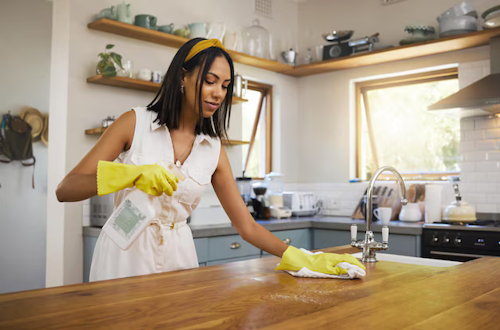Today, we are excited to offer you some invaluable tips on how to clean your kitchen appliances effectively, ensuring they remain spotless without any risk of damage.
Our kitchen appliances often boast sleek and stylish designs, exuding an air of modern elegance, yet they are also remarkably delicate and sensitive to handling.
Employing the incorrect cleaning products or methods can lead to unfortunate damage to your appliances, ultimately resulting in a more costly outcome as you may find yourself needing to replace parts or, in the worst-case scenario, the entire appliance.
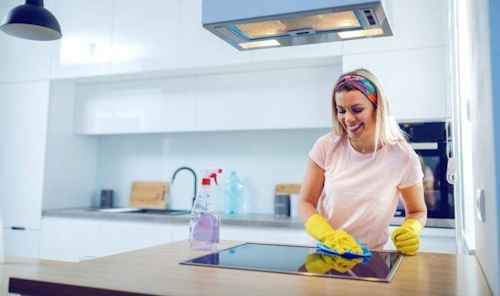
Clean Your Appliances Inside Out
When utilizing our kitchen appliances, they frequently become coated with grime both inside and out simultaneously.
On the exterior, dust swirls through the air, settling onto surfaces, while food particles, splashes of liquids, or grease from neighboring appliances accumulate, creating a sticky film.
Inside, remnants of water, coffee, or leftover food persist, clinging to the surfaces and corners.
This is why it is crucial to meticulously disassemble the components of your appliance and provide them with a comprehensive cleaning.
Naturally, you should adhere to the manufacturer’s instructions if you wish to clean your appliances properly and ensure their longevity.
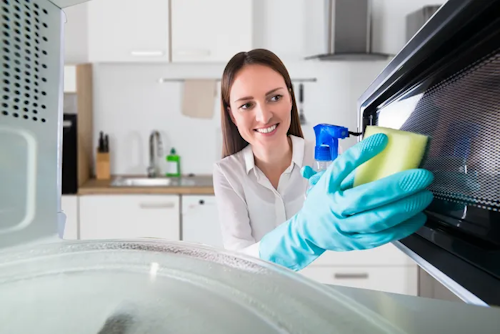
Always Go With the Grain
Many kitchen appliances boast sleek stainless steel finishes or warm, inviting wooden surfaces. When you “go with the grain,” you’re moving your cloth or scrubber in harmony with the natural lines and patterns inherent in the material.
Surprisingly, countless individuals remain unaware that materials like wood and steel possess these subtle yet distinct patterns that deserve careful attention.
By aligning your cleaning efforts with the grain, you safeguard the integrity of the surface, avoiding any potential damage or splitting of the fibers. This consideration is particularly crucial for materials like wood or leather, where the grain’s direction is visibly pronounced.
Moreover, the presence of hard water makes the need to follow the grain even more pressing. In regions such as Memphis, the water is rich in minerals like calcium and magnesium, which can exacerbate the risk of scratching.
These minerals may leave behind barely perceptible scratches, so opting for a tap filter or using distilled water can be a wise alternative.
Even with stainless steel, a trained eye can discern the grain’s subtle flow. Take a moment to observe and identify the grain before embarking on your cleaning task. In doing so, you’ll reap the rewards of maintaining the pristine condition of your appliances over time!
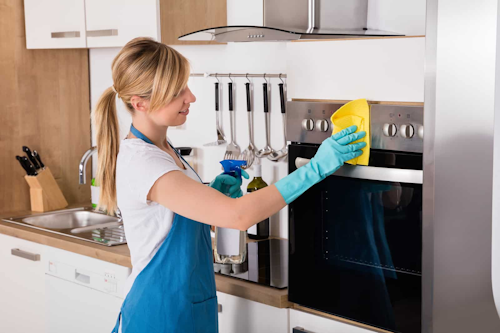
Always Wipe Dry Your Appliances After Cleaning
Ensuring that you thoroughly finish your cleaning routine is of utmost importance.
The primary reason is safety. To begin with, your appliances contain intricate electrical components that are vulnerable to damage from water. Moisture can stealthily infiltrate these components, potentially leading to malfunctions.
Moreover, it is crucial to wipe surfaces dry to prevent the accumulation of water. As previously mentioned, water can leave unsightly and permanent marks on your appliances, particularly if you are dealing with hard water, which is notorious for its mineral deposits.
Additionally, over time, water exposure can lead to the insidious development of rust, especially in areas lacking sufficient sunlight or natural airflow. This can compromise the integrity of your appliances.
Furthermore, hygiene cannot be overlooked. Water provides an ideal breeding ground for bacteria and mold. When these microorganisms come into contact with cooking appliances, the situation becomes even more concerning. By diligently wiping your appliances dry after cleaning, you create an inhospitable environment for these unwanted guests, thereby helping to prevent their growth.
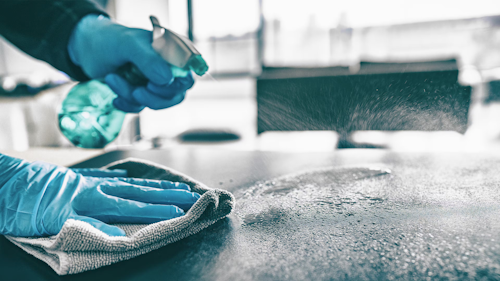
Pay Attention to Details
Tidying up our living space and ensuring it gleams with cleanliness is always quite the task. This endeavor naturally extends to our trusty appliances, which often possess tiny crevices and tricky, hard-to-reach nooks that require special attention.
To tackle these challenging areas, it’s beneficial to seek out two or three handy tools. An old toothbrush, for instance, serves as an excellent detailing instrument, its bristles adept at scrubbing away grime in those narrow spaces. Electric air canisters are another great ally, their powerful bursts of air effectively dislodging stubborn dust that clings to surfaces.
Before diving into the cleaning process, it’s wise to test any product on a discreet, out-of-sight spot. Surfaces and materials can react unpredictably to different cleaning agents, so caution is key.
Microfiber cloths are indispensable, with their soft, absorbent texture perfect for soaking up both dust and liquids like detergent or water, leaving surfaces spotless and dry.
A steam cleaner proves to be an essential tool for tackling water fixtures and splashbacks. Steam, being nothing more than water, offers a fantastic cleaning solution that is gentle enough for nearly any surface. However, its intense heat demands caution, as it should not be applied to materials that are not steam-resistant or heat-resistant.
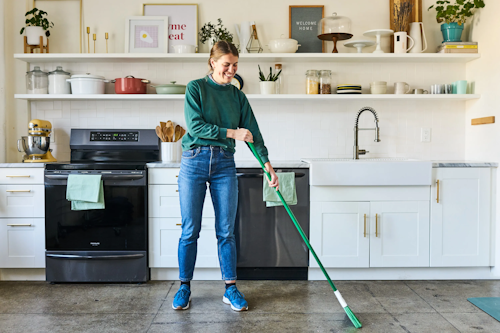
Use the Right Cleaning Products
Using the right cleaning products to clean your kitchen appliances is extremely important. Here’s why:
First of all, many appliances accumulate layers of food residue and grease over time. These grimy buildups are most commonly found in ovens and microwaves, where splatters and spills often go unnoticed. The ideal cleaning product should possess the power to dissolve and lift these stubborn residues with ease.
Second, while abrasive cleaners excel at scrubbing away food and grease, they also have a notorious reputation for leaving unsightly stains and stripping away the protective coating of your appliances. Additionally, many of these harsh cleaners release toxic fumes that are hazardous to breathe in, or can be overly harsh on your skin, even when you’re wearing gloves.
Next, if you opt for a more “harmless” cleaner, there’s often a lingering uncertainty about its ability to thoroughly remove all the grime you’re eager to eliminate.
It’s crucial to discover the perfect blend—a product that strikes a balance between being safe and still highly effective.
If you choose to go with commercial cleaning products, be diligent in selecting those that are fume-free and devoid of phosphates, ammonia, and bleach, if possible. These ingredients can be harmful to both your health and your kitchen surfaces.
For those who prefer DIY cleaning solutions, it’s wise to choose components that are gentle on the materials of your appliances, such as stainless steel or plastic. Mild dish soap, lemon juice, white vinegar, and baking soda are often versatile and safe on most surfaces, providing a natural and effective way to maintain a clean kitchen.
Conclusion
And there you have it! Your kitchen appliances will gleam with cleanliness and, most importantly, remain in perfect working order if you dedicate the time and attention they deserve. Imagine the glossy shine of your refrigerator door, the sparkling surface of your stovetop, and the pristine interior of your oven, all as a result of your careful maintenance.
Be sure to disassemble them with patience, taking each piece apart methodically, and use the appropriate tools to ensure you reach every nook and cranny. This thorough approach will help you maintain their functionality and extend their lifespan, keeping your kitchen running smoothly and efficiently.

